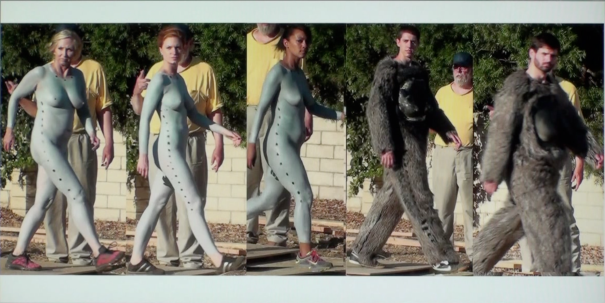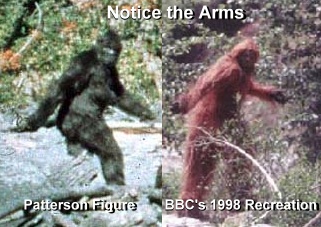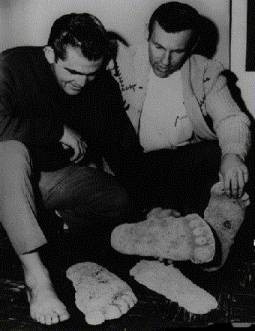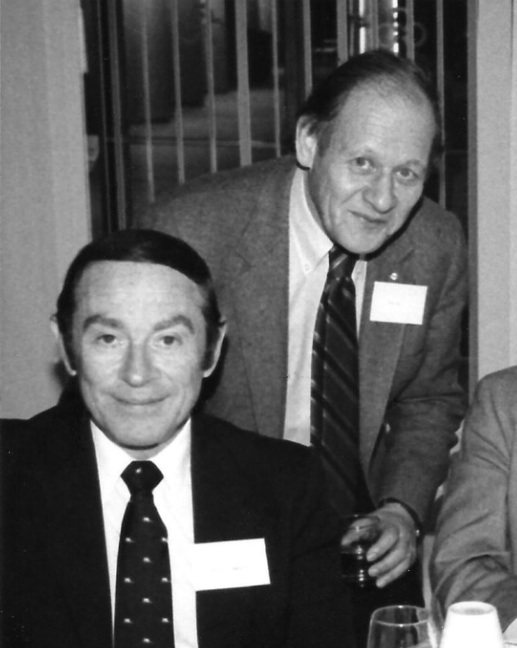
Today, October 20, 2015, is the 48th anniversary of the filming of an alleged Bigfoot at Bluff Creek, California. The result is called the “Patterson-Gimlin Bigfoot Film,” or “Footage,” in honor of Roger Patterson (who died in 1972) and Robert “Bob” Gimlin (who is still alive).
I have done research on the “anniversary syndrome” and always wonder who might pass away on this day.
Dates have a strong unconscious impact on people. Let me give some instances.

Someday on a future December 7th, people will think about Menehunes and Hawaii, joyfully. But 1941 was not that long ago to some who are still alive.
December 7th is Pearl Harbor Day. Because it is on a Monday in 2015, the association may be less than if it was on a Sunday. Lots of people in the aging baby boomer generation still have memories of how they were raised. And they have feelings on that date because of how the World War II generation who were their parents felt. Sadly, our children and most people reading this have a similar and immediate reaction to hearing the date “9/11.”
Believe it or not, almost the same kind and milder emotions are stirred in relationship to cryptozoology anniversaries, on many different levels, of course.
Think about it. August 15th, 2008. If you remember the date, it stirs anger. That was “Bigfoot Friday,” when Tom Biscardi and two gentlemen from Georgia held their news conference about what turned out to be a Bigfoot costume in an ice chest. That was a dark Friday in Bigfoot history.

Tom Biscardi, center, is swamped by members of the media as he disperses photos of what he claims to be both a deceased and a living Bigfoot, during a media conference Friday, August 15, 2008, in Palo Alto, California. (Photo credit: Ben Margot)
There have been happier dates to remember in Bigfootery. Like today’s.




Today’s recalled Bigfoot film is to cryptozoology/hominology what the Zapruder Film is to assassination research. It has been analyzed deeply. The Patterson-Gimlin Bigfoot film anniversary date of October 20, 1967 is certainly the clearest example of a significant date in the field. Not a year goes by when it is not remembered in the field.
I continue to be glad no one in Bigfoot studies or hominology died in the days leading up to October 20th, or on the date itself, every year.
But strangely, there has been a direct sync, two prominent individuals in the Skeptical community have died on October 20th.


Grover Krantz, you will recall, left us on Valentine’s Day. Krantz died on February 14, 2002 (see obituary). Intriguingly, Roger Patterson was born on Valentine’s Day, February 14, 1933. He died on January 15, 1972. Robert “Bob” Gimlin was born on October 18 in 1931. In 1967, having just turned 36, two days later on October 20th, his unexpected moment in history would occur.

Dmitri Bayanov (living), John Green (living), Grover Krantz (deceased), and George Haas (deceased).
As many of you know, an area of academic research I’ve conducted involves the sociological and historical impact and the mystery of death and dying among humans. I’ve done work and written books on suicides, suicide prevention, murder-suicide timing, going postal events, and school shootings. I have penned obituaries to celebrate life, to avoid dwelling on the type or moment of death, but instead to reinforce the remembering of a person’s entire legacy.
There are well-known but little-discussed syndromes that involve “when” people die that have always intrigued me: the “Anniversary” and the “Birthday” reactions and syndromes, for example.
It is a matter of native folk knowledge that some people appear to wait until their birthdays to die on that date or immediately afterward. Research has proven it has a basis in fact.
People seem to wait for holidays or anniversaries that are important to them, and pass away near those dates.
As with most research passions, this study touches me personally and my sense of it began long ago. Sometimes one learns best by taking to heart lessons taught early on, even before the research and reasoning for “why” was there. For me, it began with a story my mother told me that happened to her during her own childhood and was brought home to me when I was a man.
Synchromysticism and synchronicities were part of my life, as I was growing up, simply and concretely, because my mother’s stories linked dates to important events.
My Cherokee grandmother Nellie Gray was killed by her second (then estranged) husband, my mother’s stepfather, in a murder-suicide on Valentine’s Day, 1940. Besides it being Valentine’s Day, it was only eleven years earlier in 1929 that the Valentine’s Day Massacre occurred. Like my family’s tragedy, the Massacre had happened in Illinois, and it remained a big media anniversary back then.
My father, a Navy veteran of the Pacific campaign in World War II, died after suffering with lung cancer for three years on December 8, 1985, in Illinois, shortly after Pearl Harbor Day dawned in Hawaii. December 8, that year, was also the 5th anniversary of John Lennon’s assassination. Every year, when people talk of Lennon’s death, I can hardly escape the fact that my father died five years to the day after Lennon, whose music, of course, meant a great deal to me and my fellow college generation.

It is true that you can find memorable events that have happened on any date on the calendar, but it’s a different matter when the historic incidents are especially significant to the people dying. These syncs are worthy of noting and pondering.
Mark Stibich, Ph.D., has this to say about this topic, as it relates to traumatic memories:
There is a commonly held belief that people die more around dates that they associate with loved ones passing or near certain holidays. Some of the statistics prove true – there are more deaths around Christmas (for Westerners) and just after Chinese New Year’s (for Chinese). People seem to be able to time their deaths – extending them slightly to make it to a holiday, birthday or other event.
A recent report in Reuters told of a case in which a woman had a heart attack exactly one week (to the hour) after her father had died. The strangest part is – she was standing at the grave of her sister who had died when she heard the news of her father’s death. Researchers have called this the “anniversary reaction.”
Researchers don’t exactly know what the “anniversary reaction” is or how it might work. What we do know is that thinking positively about the future can add years to your life. So find something to look forward to and be positive about, especially near sad anniversaries.“Anniversary Reaction – Can Memory Trigger Death?”
If this is related to birthdays, where people actually are able to stem the tide of death until they reach their birthdays or important dates, you can see how it interrelates with the “anniversary reaction.” I am always naturally worried for some older Bigfooters around the Patterson-Gimlin film’s anniversary.
I wondered if anyone tied to the Bigfoot field would key in, psychologically, to October 20th, this year, once again, and wait to die near this milestone date.
Follow CryptoZooNews
Not Found
The resource could not be found.